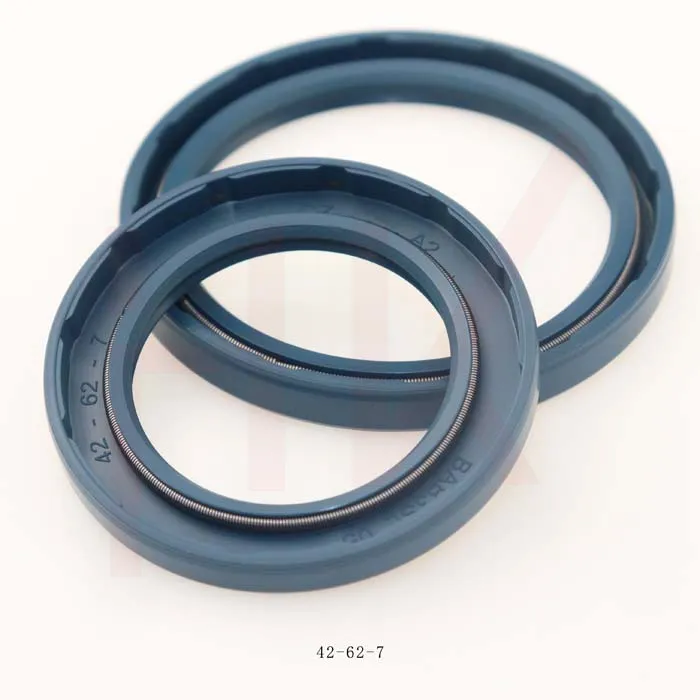Dec . 23, 2024 19:05 Back to list
pneumatic wiper seal
Understanding Pneumatic Wiper Seals Function, Design, and Applications
Pneumatic wiper seals, crucial components in various industries, are designed to protect pneumatic cylinders from contamination and maintain optimal performance. As the demand for efficient and reliable pneumatic systems grows, so does the significance of robust sealing technologies. This article will discuss the function, design, and applications of pneumatic wiper seals, providing insights into their importance in industrial operations.
Function of Pneumatic Wiper Seals
The primary function of pneumatic wiper seals is to prevent dust, dirt, and other debris from entering the pneumatic cylinder. This is particularly important in environments where particulate contamination can significantly impair the operation of machinery. Not only do these seals help maintain cleanliness, but they also extend the lifespan of the pneumatic components by minimizing wear and tear caused by abrasive materials.
When a pneumatic piston moves in and out of the cylinder, the wiper seal effectively wipes the rod, ensuring that contaminants do not travel back into the system. This action is critical as it helps maintain the integrity of the pneumatic actuation process, leading to smooth operation and reduced maintenance costs.
Design of Pneumatic Wiper Seals
Pneumatic wiper seals are meticulously designed to address specific performance requirements. They are typically made from high-quality elastomers or thermoplastics, chosen for their durability and resistance to wear, oil, and temperature variations. The design configurations often include features such as
1. Geometric Shape Wiper seals come in various profiles, including lip seals, U-cups, and custom designs tailored for unique applications. The shape influences the sealing capacity and effectiveness of the wiper. 2. Material Selection Selecting appropriate materials is crucial for the seal's performance. Common materials include polyurethane, rubber, and PTFE, each offering distinct advantages in terms of flexibility, chemical resistance, and thermal stability.
3. Surface Finish The finish of the wiper seal surface can affect its performance. A smoother surface reduces friction, while a textured surface can enhance wiping efficiency.
pneumatic wiper seal

4. Fit and Tolerance Achieving the right fit between the seal and the pneumatic rod is essential. Too loose, and contaminants can enter; too tight, and it can lead to excess wear or failure. Precise tolerances ensure the optimum functioning of the seal.
Applications of Pneumatic Wiper Seals
Pneumatic wiper seals find applications across a broad spectrum of industries. Their use is most prominent in sectors such as
1. Manufacturing In industrial machinery, pneumatic wiper seals protect cylinders used in assembly lines, robotic arms, and automated equipment, ensuring efficient operation amid dust and debris.
2. Automotive In the automotive industry, these seals are implemented in pneumatic braking systems and other components where cleanliness is paramount for safety and performance.
3. Mining and Construction In heavy-duty applications like mining and construction, pneumatic systems endure harsh conditions where exposure to dirt and contaminants is inevitable. Wiper seals play a critical role in protecting these systems against environmental challenges.
4. Agriculture Pneumatic systems in agricultural machinery, such as planters and tractors, benefit from wiper seals, which ensure that these systems remain operational even in field conditions where exposure to dirt is prevalent.
Conclusion
In conclusion, pneumatic wiper seals are indispensable components in achieving efficient and reliable performance in pneumatic systems. By effectively preventing contamination, these seals not only enhance operational longevity but also contribute to reduced maintenance costs and improved overall efficiency. As industries continue to evolve, the demand for advanced sealing solutions like pneumatic wiper seals will undoubtedly grow, highlighting their importance in a wide range of applications. Understanding their function, design, and applications empowers engineers and technicians to make informed decisions that lead to optimized performance in their respective fields.
-
TCN Oil Seal Metal Ring Reinforcement for Heavy Machinery
NewsJul.25,2025
-
Rotary Lip Seal Spring-Loaded Design for High-Speed Applications
NewsJul.25,2025
-
Hydraulic Cylinder Seals Polyurethane Material for High-Impact Jobs
NewsJul.25,2025
-
High Pressure Oil Seal Polyurethane Coating Wear Resistance
NewsJul.25,2025
-
Dust Proof Seal Double Lip Design for Construction Equipment
NewsJul.25,2025
-
Hub Seal Polyurethane Wear Resistance in Agricultural Vehicles
NewsJul.25,2025
-
The Trans-formative Journey of Wheel Hub Oil Seals
NewsJun.06,2025
Products categories
















